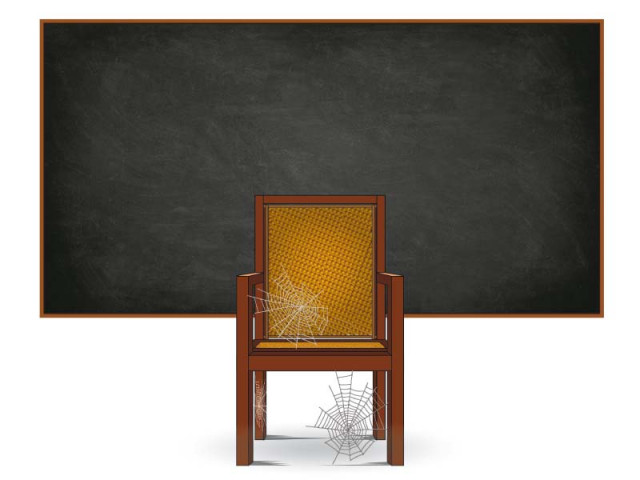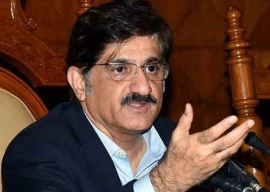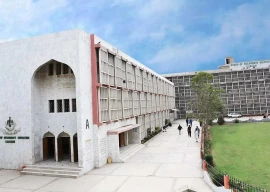
Give this sentence to a class five student in a Sindh government school and chances are that she won’t be able to read it. Why is it that these students can’t read if the government has been steadily funneling more and more money into primary schools? Indeed, this year, their budget was cranked up eight percent to Rs57 billion—an impressive number but one that is not matched by the report card.
Not only is a lot of money set aside for primary schools but they are also getting the lion’s share of the total education budget: 38% of Rs149 billion. This allocation is, admittedly, proportionate to their large numbers: 91% of the province’s total of 49,000 schools are for grades 1 to 5. They deserve their share.
And so it appears that the people managing education have the right idea. Sindh has consistently diverted larger and larger pieces of the pie to providing the most basic of education. This funding grew from Rs44 billion three fiscal years ago to Rs52 billion and it is now Rs57 billion. Most people would praise the provincial government for dedicating a fifth of its entire spending to the education department.

The picture gets even better when we look at where the money is going. This year, for example, 75% of the budget or Rs55 billion will be spent on paying 99,000 teachers. The former education minister, Pir Mazharul Haq, explained their reasoning: “We believed that the status of education in the province would be considerably improved by motivating teachers by offering them unprecedented monetary incentives.” And so, for every Rs100 that the government will spend on primary education, Rs96 of it will go to teacher salaries. How can that be a bad thing? Doesn’t this bust a myth that government school teachers are poorly paid?
Once the congratulatory fuss over the budget speech dies down, however, and June winds up, we spend the rest of the year scratching our heads over why the children are doing so poorly in the classroom. Only 21% of all children in class five are able to read in Urdu or Sindhi, discovered the independent Annual Status of Education Report (ASER). Hardly one-third of them can do simple two-digit arithmetic division.
The education department’s own internal Reform Support Unit reached the same conclusions when it drew up its own report card, something which should have convinced even the most hardened of skeptics.
The Sindh government’s Reform Support Unit, formed in 2005 to strengthen the education department, worked with the Institute of Business Administration in Sukkur to conduct large-scale Standardised Achievement Tests based on the national curriculum in all 23 of Sindh’s districts to gauge learning levels in languages, Math and Science up to class six. Saba Mahmood, who heads the Reform Support Unit, told The Express Tribune that they found average student achievement was a pitiful 22% if they considered 100% what the child should know. (The individual averages were not much better: 32% achievement in languages, 19% in Science, and 15% in Math). “This year around, what we have witnessed is just about one per cent improvement in the cumulative score of 22%,” she said while sharing the 2012 findings.
The experts have two explanations why Sindh’s primary school students are not doing well even though the government is throwing so much money at the problem. The first questions how the budget is divided up and the second factors in teacher performance.
For the first explanation, one of the brains behind ASER, Baela Raza Jamil, feels the government’s education spending priorities need to be rejigged. “As compared to the massive expenditure on salaries and day-to-day operating expenses, the spending on infrastructure and human resource development has remained starkly disproportionate over the years,” she explains. “The government has yet to get its priorities right. It needs to shift the focus towards qualitative and infrastructural improvement of the public education system that is on the verge of collapse.” In a nutshell, the government is shelling it out for salaries but is ignoring training teachers and building toilets.
If we return to the budget breakdown, out of every Rs100, Rs96.6 is spent on teacher salaries but only Rs3.4 goes to development. This is what Baela Raza Jamil is talking about. Only Rs1.9 billion of the Rs57 billion primary education budget for Sindh will go to development. All its money is going into salaries, perks and allowances, paying utility bills.
Development and expansion, thus, are low on the priority list. Why is it, for example, that not enough money is being given to building secondary schools? As mentioned above, Sindh has a total of 49,000 schools—but 91% of them are primary schools! It is as if the province doesn’t think that secondary school education is needed. ASER found that it was precisely because there were not enough post-primary schools, the drop-out rate after class 5 was 34% in Hyderabad and 27% in Dadu and Badin, for example.
For the second explanation, Saba Mahmood of the Reform Support Unit zeroes in on absenteeism and sheer nonchalance among the majority of primary school teachers in Sindh. “We have come to recommend the provincial education officials link teacher promotions to SAT-based learning outcomes of their students, instead of [using] the existing system of time-scale promotions,” she suggests.
This proposal appears viable to Salman Naveed Khan, a political advocacy campaign manager at Alif Ailaan, a Pakistani alliance for education reform. But he argues that for it to work the Sindh education department has to at least get its teachers regularly into school.
Absenteeism is an epidemic. “Not many [teachers] would care about promotions when they get sizeable salaries at the start of each month without even showing up,” he says. “[They] have all the time to make a living – and make it good – from other means. They perceive their teaching job as merely social security for life.”
What could tackle absenteeism, he suggests, is independent monitoring and evaluation as is done by the Punjab school education department. Biometric attendance for teachers and students and digitization of the entire workings of the department are perhaps the most appealing ways to get to the root of the problem. If Sindh can spend Rs55 billion on teacher salaries, surely it can find some way to monitor their performance.
Published in The Express Tribune, February 17th, 2015.


















COMMENTS
Comments are moderated and generally will be posted if they are on-topic and not abusive.
For more information, please see our Comments FAQ